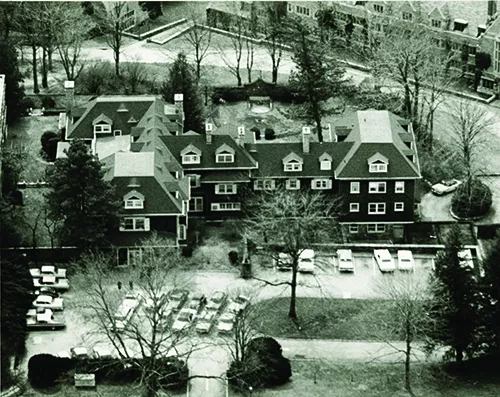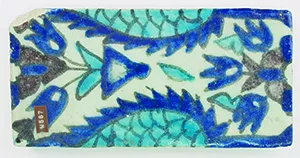The Secret Garden
Once part of the Deanery, Taft Garden has become a cherished sanctuary for all.
Ask any group of Mawrters to name their favorite spot on campus, and chances are that more than a few will wax poetic about Taft Garden, the serenely beautiful walled enclosure tucked out of sight behind Canaday Library.
This oasis of calm, where generations of harried students have sought sanctuary from stress, was originally a private garden adjoining the Deanery, the campus residence of the first dean and second president of the College, Martha Carey Thomas.
From 1885 to 1922, the Deanery was a focal point on campus for students, faculty, and visitors, who attended events, teas, and meetings within its walls. The garden was used by Thomas for rest and relaxation. At night, 300 glass lanterns blown from special designs at Murano near Venice lit the secluded outdoor space.
When Thomas retired, she gave the building to the College, and it was used as the Alumnae House until it was razed in 1968 to make way for Canaday Library. The garden, modified and renamed the Blanca Noel Taft Memorial Garden in 1974, is all that remains.
Designed in 1908 by John C. Olmsted—nephew and stepson of Frederick Law Olmsted, who designed Central Park, Fairmount Park, and the original landscape plans for Bryn Mawr’s campus—the garden was conceived as a small, shady, retreat with statuary based on designs Thomas and her partner Mary Garrett had seen in Italy.
American designer Lockwood de Forest provided designs for the stone staircases, paths, cement garden wall, and fountain basins. At one time, as many as eight water-spewing bronze
figures surrounded the large sunken pool. All have since disappeared, along with several sculptures of “Fu dogs” that were placed on the staircase landing.
The garden decorations, including decorative aqua and blue palm patterned fountain tiles that Thomas and Garrett purchased from Syria have inspired recent student research. Nina Blomfield (Ph.D. candidate, History of Art) located a dealer’s receipt for the tiles in the College Archives, which she included in her 2019 exhibition, All-Over Design: Lockwood de Forest between Ahmedabad and Bryn Mawr.
Black at Bryn Mawr tour guide Beza Wondwossen ’23 is doing further research on the tiles—and the claim that they come from Syrian tombs—for potential inclusion in the tour.
Many of the original tiles have been replaced with replicas created in 2002 by Peace Valley Tile in Doylestown.
Published on: 02/07/2023

